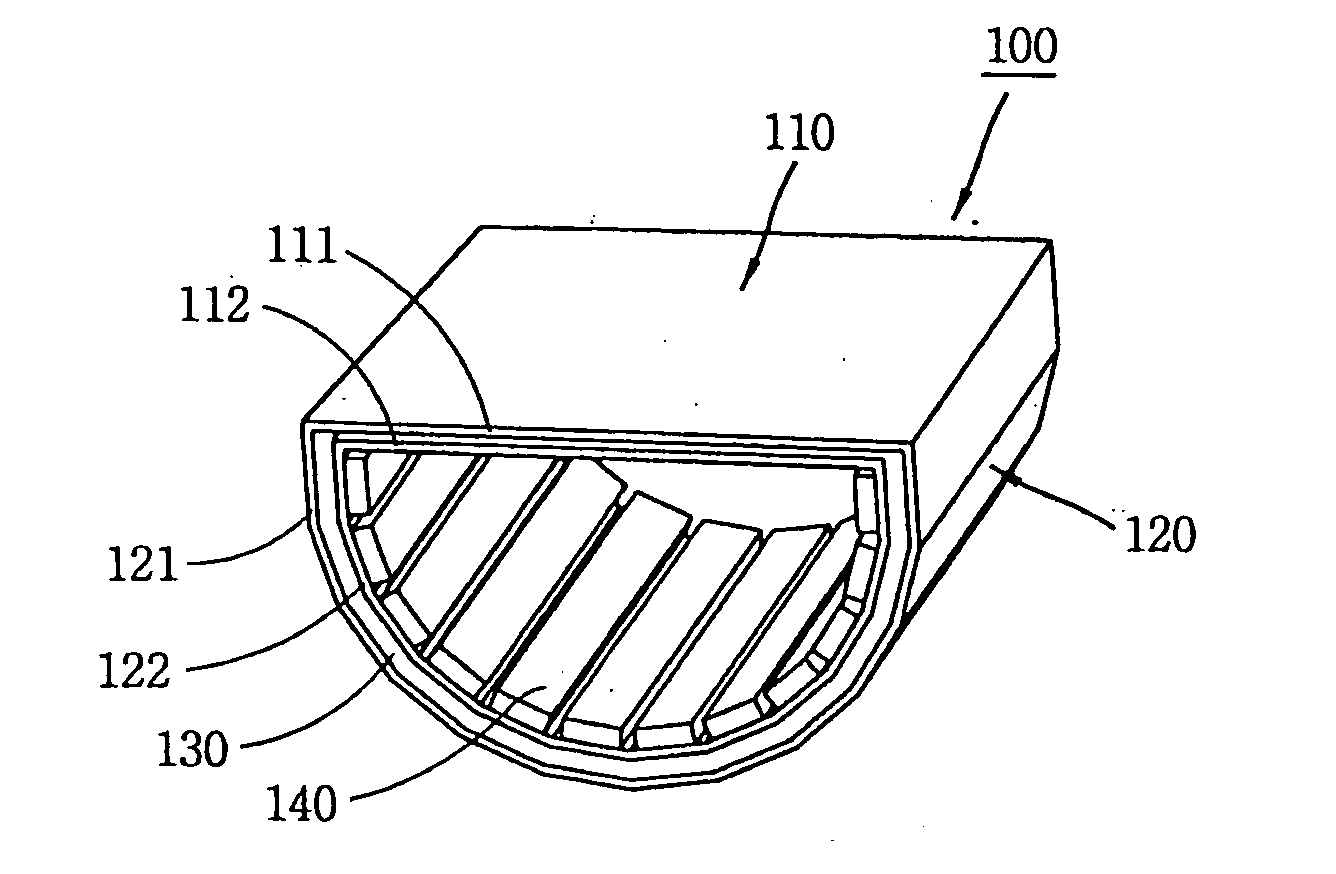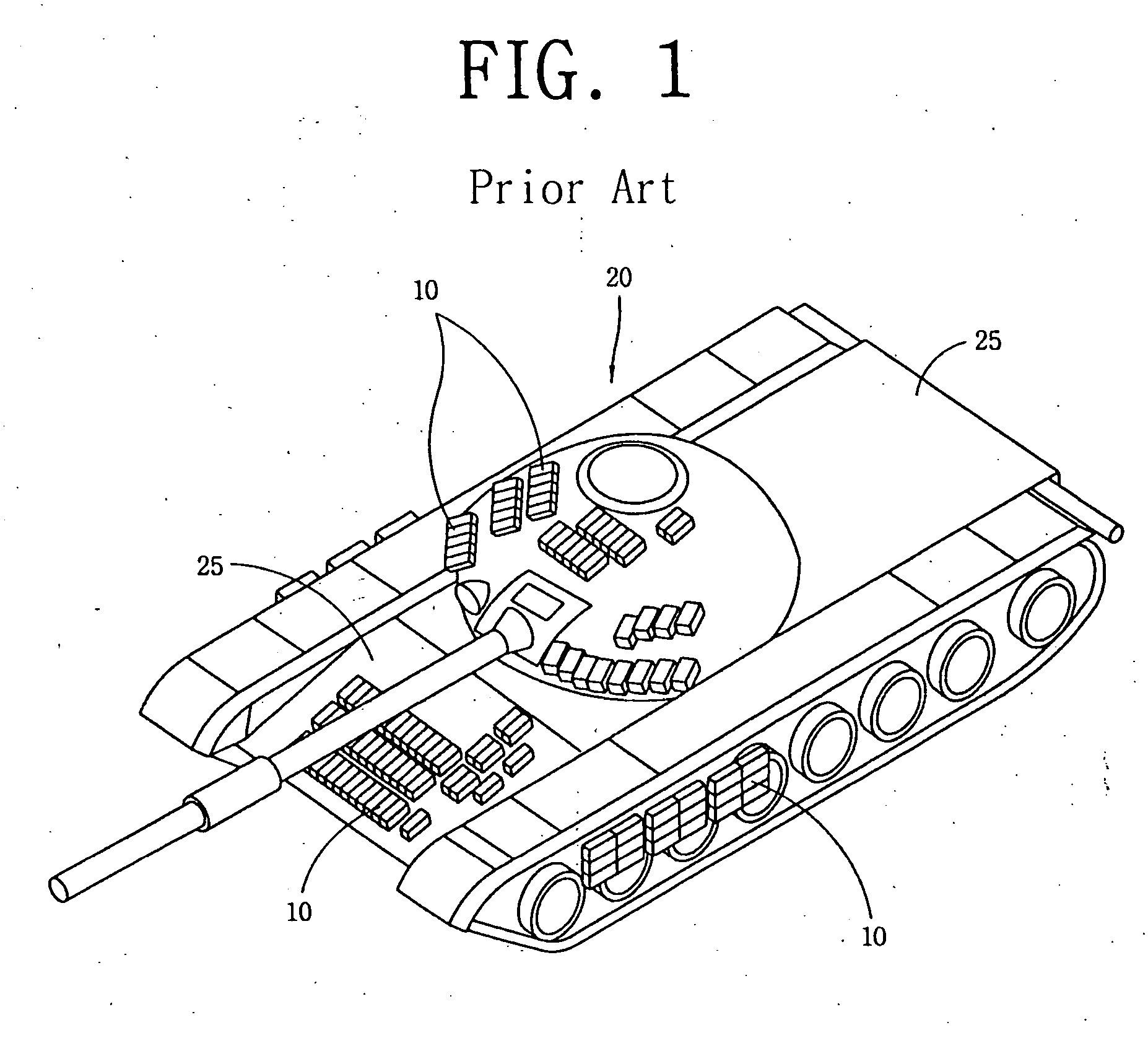Explosive reactive armor with momentum transfer mechanism
a technology of momentum transfer mechanism and reactive armor, which is applied in the direction of reactive armour, armour plates, armoured vehicles, etc., can solve the problems of inability to achieve the desired protection effect, and the failure to achieve the purpose of providing protection capability, so as to achieve the effect of maintaining protection capability and improving interaction
- Summary
- Abstract
- Description
- Claims
- Application Information
AI Technical Summary
Benefits of technology
Problems solved by technology
Method used
Image
Examples
first embodiment
[0031]FIG. 4 is a perspective view showing the construction of an explosive reactive armor with a momentum transfer mechanism in accordance with the present invention. The explosive reactive armor 100 with the momentum transfer mechanism according to the present invention includes: a front plate member 110 formed of a pair of flat spaced apart plates 111 and 112; a hemi-cylindrical rear plate member 120 formed of two concentric curved spaced apart plates 121 and 122 which are connected to the corresponding two flat plates 111 and 112 of the front plate member 110, respectively; and a reactive material 130 such as a high explosive charge filling in the gap between each of the two plates of the front plate member 110 and the rear plate member 120.
[0032] Herein, the reactive material 130 forms a continuous closed loop. As a result, when detonation occurs at a certain point, the detonation propagates along the reactive material 130 from the initial detonation site. A hemi-cylindrical sp...
fourth embodiment
[0049] An explosive reactive armor 300 in accordance with the present invention, as shown in FIG. 7, is also formed by modifying the basic arrangement of the explosive reactive armor 100 with the momentum transfer mechanism. In the explosive reactive armor 300, the form of the explosive reactive armor is arranged as a right triangle (the angle between first and second rear plate members 320 and 330 is about 80° to 100°), and flying elements 340 and 350 are added only onto the front plate member 310 and the second rear plate member 330 parallel with the ongoing direction of the threat 2. In such construction, because the front surface flying element 350 is oblique with respect to the ongoing direction of the threat 2, a dynamic plate thickness of the flying elements 310 and 350 can be increased, while the second rear plate member 330 travels transversely to the ongoing direction of the threat according to the propagation of the detonation wave to apply a momentum in a transverse dire...
PUM
 Login to View More
Login to View More Abstract
Description
Claims
Application Information
 Login to View More
Login to View More - R&D
- Intellectual Property
- Life Sciences
- Materials
- Tech Scout
- Unparalleled Data Quality
- Higher Quality Content
- 60% Fewer Hallucinations
Browse by: Latest US Patents, China's latest patents, Technical Efficacy Thesaurus, Application Domain, Technology Topic, Popular Technical Reports.
© 2025 PatSnap. All rights reserved.Legal|Privacy policy|Modern Slavery Act Transparency Statement|Sitemap|About US| Contact US: help@patsnap.com



